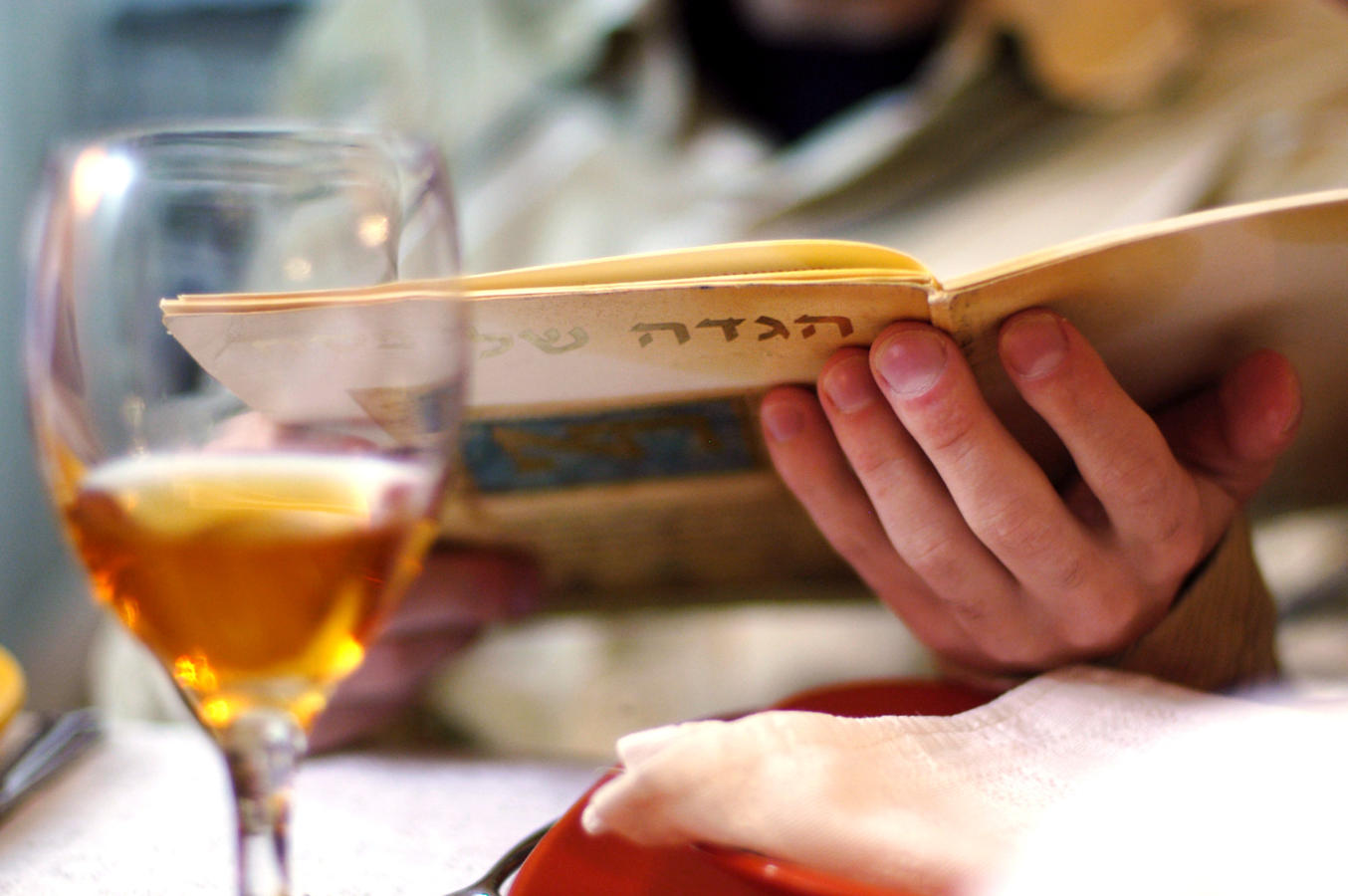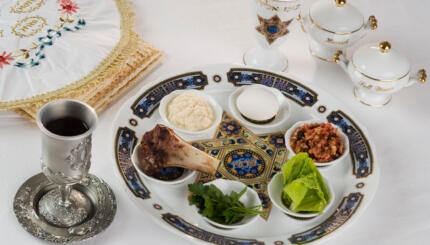With thousands of published Haggadahs available for purchase, choosing the one that is the right fit for your seder can be overwhelming. Here are some things you might want to consider when selecting a Haggadah, along with some specific suggestions.
Denomination
If you are looking for a Haggadah that speaks to your Jewish denomination, here are a few that specifically affiliate with a denominational viewpoint:
- Reform: The Open Door: A Passover Haggadah
- Orthodox: The Family Haggadah (Artscroll Mesorah Series)
- Hasidic: The Breslov Haggadah: The Traditional Pesach Haggadah With Commentary Based on the Teachings of Rebbe Nachman of Breslov
- Conservative: Passover Haggadah: The Feast of Freedom
- Sephardic: The Sephardic Family Haggadah
Length
A full seder is often hours long, stretching past midnight, but it’s also possible to create a shorter ritual. Some Haggadahs are unabridged but aim to steer readers through the ritual quickly, while others abbreviate the ritual. Here are some Haggadahs whose express purpose is, well, an express seder:
With your help, My Jewish Learning can provide endless opportunities for learning, connection and discovery.
- The Swift Seder: The Concise Passover Haggadah for a Reverent Yet Efficient Seder in Under 30 Minutes
- The No-Nonsense Haggadah: The Essential Family-Friendly Traditional Passover Haggadah for a Meaningful and Speedy Seder
- The 30-Minute Seder: The Haggadah That Blends Brevity With Tradition
Cost
At your seder, guests can share copies of the Haggadah between them, but it’s nice to have a copy for each participant. A full set of eight, ten or more Haggadahs can become pricey. However, there are budget options.
Low cost: If you don’t want to break the bank, the following Haggadahs are among the least expensive Haggadahs available on the market today.
- The Essential Seder: A Contemporary Haggadah
- The Basic Sephardic Haggadah: Hebrew, English, and Scallions
Free Haggadahs: There are also many free, downloadable PDF Haggadahs online like this and this. Thanks to sophisticated online tools, you can also choose to make your own with relative ease and expert guidance.
Children
The seder ritual is designed with children in mind. It has many tactile rituals to engage participants, young and old. And the ancient rabbis understood that children can find it difficult to stay awake and engaged at the table late at night, which is why they built rituals into the seder, like the afikomen, meant to keep them entertained. Nonetheless, it can be helpful to have a Haggadah designed with children in mind. Many contemporary Haggadahs are geared toward families, including:
- The Kveller Haggadah: A Seder for Curious Kids (and their Grownups)
- Richard Codor’s Joyous Haggadah: The Illuminated Story of Passover
- A Different Night, The Family Participation Haggadah
- Passover Haggadah Graphic Novel
If you have older children at the seder, you may also enjoy incorporating Passover Parodies: Short Plays for the Seder Table. Please note, this is not a Haggadah, but a nice seder supplement for families.
Commentary
Perhaps you are looking for a Haggadah that goes well beyond the basic text of the Passover seder to deepen your understanding of the holiday. In that case, you may be looking for something that is supported by a robust commentary. Here are a few examples:
- The Schechter Haggadah: Art, History and Commentary (Especially good for those interested in the historical development of the seder.)
- My People’s Passover Haggadah Volume 1: Traditional Texts, Modern Commentaries (Commentaries by scholars from all major Jewish denominations.)
- My People’s Passover Haggadah Volume 2: Traditional Texts, Modern Commentaries
- The Essential Haggadah for Pesach: The Pesach Haggadah with translation and explanations based on essential Torah sources (Focus on textual sources of the seder.)
Celebrate Passover with Jewish Luminaries
Perhaps you would like to be guided through the seder ritual by a trusted Jewish thinker and leader? In that case, you might choose a Haggadah that features a particular voice, such as:
- The Jonathan Sacks Haggada (With reflections from the former chief rabbi of England.)
- A Passover Haggadah: As Commented Upon by Elie Wiesel and Illustrated by Mark Podwal (Commentary from the Nobel Peace laureate and Holocaust survivor.)
- The Seder Night: An Exalted Evening (With commentary based on the writings of Rabbi Joseph Soloveitchik)
Beauty
In Judaism, there is a principle of hiddur mizvah, making the fulfillment of commandments beautiful. In line with this principle, there is also a long Jewish tradition of richly illustrating Haggadahs, often with unique, hand-drawn illuminations. Today, many printed Haggadahs likewise come in an array of lush designs and styles. The downside of a gorgeous tome is that it’s likely a bit pricier and there’s a possibility one of your guests will spill wine all over it. But a beautiful Haggadah can also enhance your seder aesthetically. Here are a few suggestions:
For a beautiful (and modern) Haggadah check out
- New American Haggadah (modern)
- The Syzk Haggadah (features illustrations in the style of medieval illuminated manuscripts)
- The Asufa Haggadah (changes every year, featuring a variety of Israeli artists)
- Night of Beginnings: A Passover Haggadah (illustrated by Marcia Falk)
Haggadahs featuring the work of celebrated artists are particularly pricey, but beautiful additions to a collection.
- Chagall’s Passover Haggadah (with illustrations by Marc Chagall)
- The Moss Haggadah (illustrations by David Moss)
- Ben Shahn’s Haggadah for Passover (illustrations by the Israeli artist)
Parody Haggadahs
For those looking for a less serious take on the holiday, there are a variety of Haggadahs catering to contemporary fads and fashions, from Star Wars to Taylor Swift.
- The Sweet Taste of Freedom: The Chocolate Seder Haggadah
- This Haggadah is The Way: A Star Wars Unofficial Passover Parody
- The (Unofficial) Hogwarts Haggadah
- The Unofficial Taylor Swift Haggadah
- The Baseball Haggadah: A Festival of Freedom and Springtime in 15 Innings
- The Dad Jokes Haggadah
- The Office Haggadah: An Unofficial Scranton Seder
- The Yada Yada Haggadah: A Sitcom Seder
Whatever Haggadah you choose, we hope you have a meaningful seder. Chag sameach!
Haggadah
Pronounced: huh-GAH-duh or hah-gah-DAH, Origin: Hebrew, literally "telling" or "recounting." A Haggadah is a book that is used to tell the story of the Exodus at the Passover seder. There are many versions available ranging from very traditional to nontraditional, and you can also make your own.
kibbutz
Pronounced: ki (short i)-BOOTZ (oo as in book), Origin: Hebrew, a collectively owned and run community in Israel.
seder
Pronounced: SAY-der, Origin: Hebrew, literally "order"; usually used to describe the ceremonial meal and telling of the Passover story on the first two nights of Passover. (In Israel, Jews have a seder only on the first night of Passover.)
Torah
Pronunced: TORE-uh, Origin: Hebrew, the Five Books of Moses.



